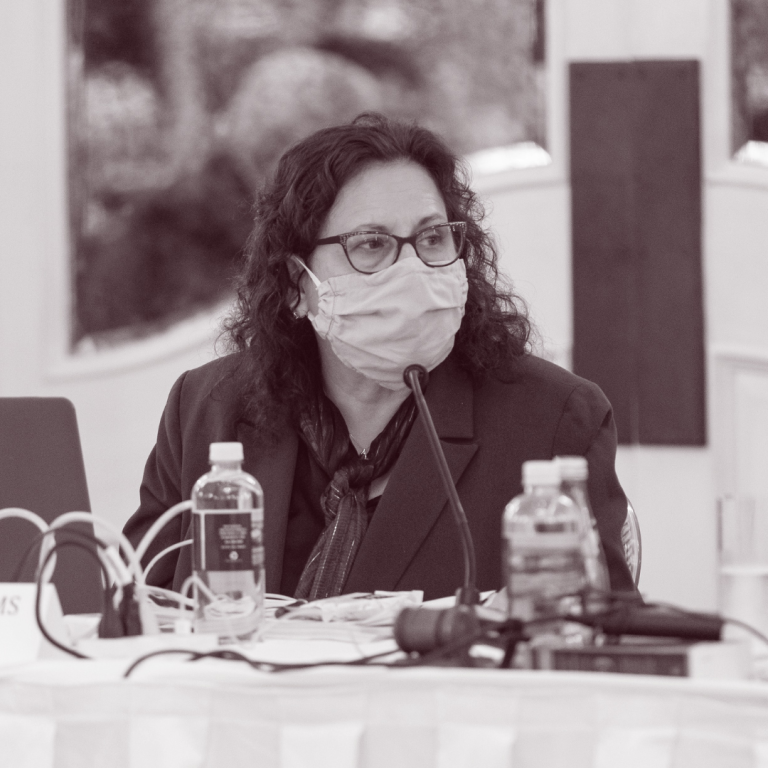More than 25 percent of the first-ever class of osteopathic physicians were women, and many milestones for women osteopathic physicians followed: in 1929, Meta Christy, DO, became the first female African American osteopathic physician; in 1936, Margaret Barnes, DO, took and passed the first-ever osteopathic licensure exam; in 1993, Barbara Ross-Lee, DO became the first female African American dean of a U.S. medical school (DO or MD); and in 2010, Karen Nichols, DO, became the first female president of the American Osteopathic Association.

Over the past decade, there has been an 18 percent increase in the proportion of female DOs in active practice, and more than 54 percent of first-year osteopathic students were female for the 2021-2022 academic year.
On this National Women Physician’s Day, we are highlighting the extraordinary career of NBOME Board Vice Chair Lori Kemper, DO, who has treated patients in private practice and spent nearly 30 years in graduate medical education. She has been the dean of Midwestern University, Arizona College of Osteopathic Medicine, since 2007.
Kemper says she always knew she wanted to be a physician, and while applying to medical schools, she saw the difference a DO could make, firsthand.
“My mom had been in a car accident, and our family doctor (an MD) referred us to a DO to help treat some resulting facial numbness,” Kemper explains. “I went with her and watched him perform what I know now is a cranial manipulation. After months of suffering with this numbness, it just went away. I said, ‘Mom, I want to do that.’ And I started applying to DO schools.”
After graduating from Kirksville College of Osteopathic Medicine (now AT Still University Kirksville College of Osteopathic Medicine), Kemper spent 25 years practicing family medicine in Chandler, Arizona and Tempe, Arizona. She began asking her alma mater to send osteopathic students to her for training because she says she “wanted to pay it forward.”
One of the students she trained was the daughter of the board chair of Tempe St. Luke’s Hospital in Arizona. Through that relationship, Kemper was able to start a family medicine residency at the hospital, and she led that program for 13 years.
Kemper was also good friends with Karen Nichols, DO, who, upon being promoted from her role as assistant dean at Midwestern, advised Kemper to apply. She did and would go on to serve as assistant dean of Graduate Medical Education before finally moving up to dean after then-Dean James Cole, DO retired in 2007.
“I always tell my students to be open to whatever comes,” Kemper says.
In addition to always wanting to be a physician, Kemper says she has always had a passion for leadership.
“Even when I was in band in school, I was always challenging the first clarinet!” she says.
Indeed, during her career, she has served as commissioner to the American Osteopathic Association (AOA) Commission on Osteopathic College Accreditation (COCA), as chair of the Board of Deans of the American Association of Colleges of Osteopathic Medicine (AACOM), as president of the Arizona Osteopathic Medical Association, and has served on the Board of the NBOME for more than a decade.
For young, female osteopathic students who may be considering leadership roles, Kemper offers two pieces of advice: pick your battles, and stick to your morals.
“It’s worthwhile to think about what’s most important to you, and not to move from that, but also recognizing you won’t win every battle. But if you don’t move from those morals, you will ultimately be successful.”
She also recognizes that there were many people who helped guide her to success, including Nichols; Kathleen H. Goeppinger, PhD, the president and CEO of Midwestern; Janice Knebl, DO, interim chair and professor of internal medicine and geriatrics at Texas College of Osteopathic Medicine; Robyn Phillips-Madson, DO, MPH, the founding dean of the University of the Incarnate Word School of Osteopathic Medicine; and, her husband and her father.
“My father used to say, ‘Remember after everything you do, you have to look yourself in the mirror.’ He taught me that a reputation is hard to build and you can lose it quickly. And if you want to be heard, don’t speak often but when you do, speak the truth.”
Kemper is optimistic about women’s role in the future of the osteopathic profession.
“When I started in osteopathic medical school, maybe one-tenth of my class was female, and now it’s more than half. That means very soon, women will be running things. They already are in many cases; we have a high percentage of deans who are women, and a high percentage of women in leadership,” she says. “Osteopathic medicine has always been welcoming to women; AT Still welcomed them into his first class, and our entire profession is based on human beings, not men versus women. I don’t know that if I had gone down the MD path if I would have had all the opportunities I have.”
Kemper adds that as an NBOME Board member, she has seen how inclusive the organization has become, and how that has contributed to its lasting success.
“The Board of the NBOME, as long as I’ve been on it, has been always a mix of men and women, but I never felt like I was in the minority,” Kemper says. “Not just board but leadership team – that is laudable as well. The efforts to attract a diverse set of people with diverse ideas has helped the NBOME be more robust.
Any place where there is that celebration of inclusion of all people–it makes for a stronger organization.”

